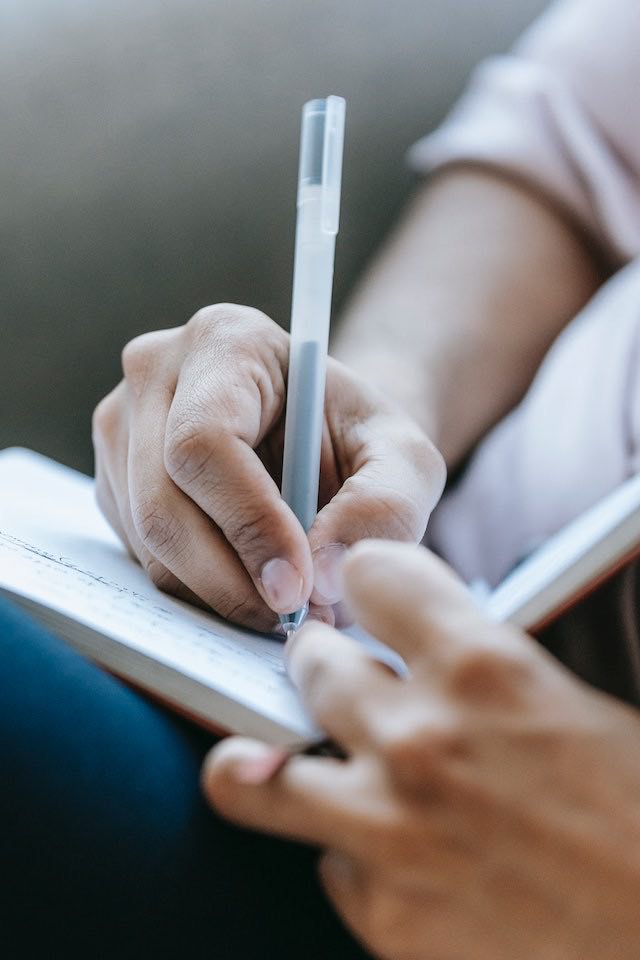
11 Things you Might Like to do After Getting in Touch with a Therapist
With the exception of point 3 all of the ideas in this blog post are optional. They are things I’ve witnessed work for people, and have positively contributed to their experience of therapy. They are in no way compulsory. If you don’t like the ideas, please don’t try them. They are suggestions that may help, but they are not essential.
I have listed them in (an advised) chronological order if you would like to try working through the ones that apply to you.

1. Take it In
Making contact with a therapist was possibly a really big deal.
Perhaps it’s been a long time coming and took a lot to do.
Take a moment to recognise that you’ve taken the most important step.
You may have felt anxious or daunted by the prospect, but you pushed through those feelings, and got the ball rolling.
Firstly, you might want to take a deep breath – that part is done.
Secondly, you might want to acknowledge a feeling of accomplishment that you’ve just done something really positive for your ‘self

2. Make Comparisons
If you haven’t already spoken to a couple of other therapists, now’s a really great time to do that. Rapport is the single most important factor when choosing your therapist. The better the connection between the two of you, statistically the more successful your therapeutic experience will be. Simply put, if you feel like there is a good connection, you will be more likely to trust that person, and open up.
By speaking with a couple of therapists, you’ll quickly discover if the person you spoke with first feels like the right person or not. It will either highlight something that was missing, or it will confirm that you’ve found the person for you.

3. Complete any Initial Admin
There are often forms to fill out, and agreements to sign at the start of the process.
Take your time, you shouldn’t feel like you are under any pressure to rush this.
When you’re ready, read the information thoroughly. There could be important things to consider.
Although it can feel confronting to specify the extent of your challenges and experiences, the information you provide is used by the therapist to ensure you receive the correct level of support, and the right type of therapy. It’s in your interest to be as honest as possible at this point.
Initial Light Exercises

4. Think About any Questions you Might Have
There may be things you want to gain further clarity on, things you’re not sure about, or something in particular that is concerning you. No question will be deemed silly, if you aren’t sure about something, it’s important to ask.
There will be time in your first session (and ongoing) to ask about anything you need clarity on.
Consider making a note of your questions, and take them along to your first session.

5. Purchase a Therapy Notebook
It’s likely that you’ll have lots to think about as you progress through your sessions. You might want to remember things that your therapist said, so noting them down either during, or after a session can be really useful.
Re-reading your therapy notes is a great way to reflect on your sessions thereafter.
Between appointments, you may want to jot things down that you don’t want to forget to say in your sessions.
Having a designated space for these notes can be really useful, it means everything will be in one place, and easy to find (especially if you date the pages, or categorise the information).
Referring back to things from earlier sessions can highlight how much things have changed. It can be a good place to record any particular coping strategies, recommendations, ideas, explanations Etc.
Although this is not mandatory, in my experience many clients find this extremely useful.

6. Consider your Objectives
Knowing what you want from your therapy can be a useful exercise. The more specific your objectives, the better:
- I want a space to talk about …..
- I want to process …..
- I want to understand why …..
- I want to learn better coping strategies for …..
- I have questions about …..
- I want help with …..

7. Mindmap
You might want to make a list of things that you’d like to discuss in your sessions. This could include topics, themes, particular experiences, certain behaviours, things you’ve noticed about yourself, specific relationships, certain memories, important beliefs, concerns or fears that you have, decisions you need to make Etc. (remember nothing is off limits when it comes to what you discuss in therapy).
Deeper Therapeutic Exercises

8. Make a Statement
Consider writing a statement about how you feel towards:
– your problems
– your ‘self’
– life in general
This can be as short or as long as you like. The purpose of this is for you to be able to look back on it and see how far you’ve come. As you get further into your sessions, or reach the end of your therapy, it can amaze people as to how much they/things can change.

9. Write your Timeline
Making a timeline of your life can be a great way to organise your thoughts before embarking on the therapy process, it can be a really revealing and enlightening exercise. It can help you to convey your story, as you begin to share your life with your therapist. It can remove a sense of how jumbled everything can feel.
For those who’ve experienced childhood/adulthood, sexual/abuse based trauma, there are specific ways to do this safely within the confines of your sessions, it’s not necessarily advisable to do this ahead of your therapy starting.
10. Keep a Record/Diary
This is often a good idea for people who struggle with behavioural problems. Examples are listed below (you may have an issue that applies, which isn’t listed).
- Problematic sleep patterns
- Addictions (of any kind)
- Anger outbursts
- Crying
- Wreckless or risky behaviours
- Self-harm
- Food and weight challenges
- Sexual issues
- Fluctuating / cyclical moods
- Anxiety / social anxiety
The idea is to record:
- the frequency of the challenge
- the specifics of each occurrence
- any notable triggers or surrounding circumstances (what led to, or contributed to it occurring)
The aims are:
- To be clear on how significantly the problem is affecting / impacting you.
- Uncover any patterns in conjunction with the unwanted behaviour.
For women it’s sometimes useful to simultaneously include details of your menstrual cycle, alongside the behavioural/emotional problem.
Sometimes emotional and behavioural problems can link with hormonal fluctuations.
The tracker/diary can be brought into therapy for clinical insight and psychological evaluation.

11. Remember, there is No Pressure.
These ideas are not compulsory. If all of this feels like too much to think about, that’s fine.
After having the first call, some people feel really motivated and ready to make a start. For those who do, all of these suggestions will have therapeutic value.
If you try them great. If you don’t try them great. Just be yourself and do what feels right.


